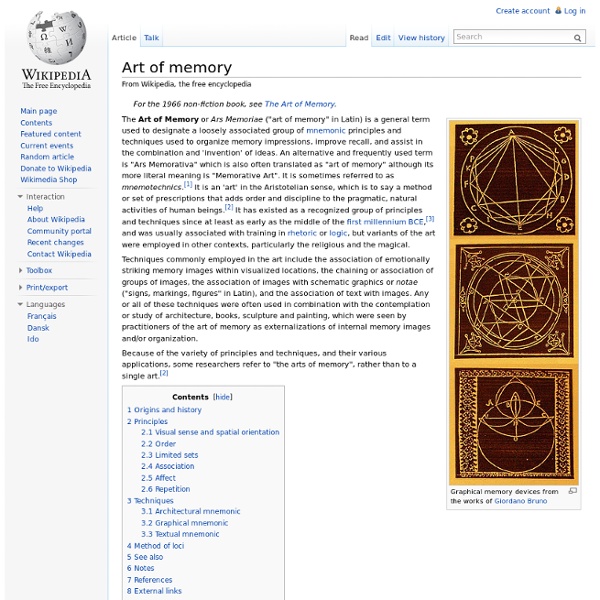Art of memory

How to Learn Without Memorizing
Photo by Edwin Stemp Rote memorization is an inefficient way to learn. Just retaining a single formula can mean pounding the same information into your skull dozens of times. If your computer hard drive had this accuracy, you’d probably throw it out. Unfortunately, you’re stuck with your brain. A few years ago, I noticed that smart people seemed to learn differently than most other people. While there are undoubtedly some genetic advantages that allow some people to learn effortlessly, I think part of this difference in success comes down to strategy. Is Your Brain a File Drawer or a Web of Ideas? A computer stores information as thousands of electrical 1s and 0s in a linear fashion. However, your brain isn’t a sequence of bits and bytes, so this approach doesn’t make sense. Other Forms of Learning What I’d like to advocate in this article is a more creative, spontaneous form of learning than the style you were probably coached for in school. 1. 2. 3. Examples: 4. 5. 6. 7.
How to Grow Close By Asking the Right Questions
36 questions to build intimacy… These questions only take about 45 minutes to discuss. They almost always make two people feel good about each other and want to see each other again, according to Dr. Here they are, in order: 1. 2. 3. 4. 5. 6. 7. 8. 9. 10. 11. 12. 13. 14. 15. 16. 17. 18. 19. 20. 21. 22. 23. 24. 25. 26. 27. 28. 29. 30. 31. 32. 33. 34. 35. 36. Variations 37. 38. 39. For editing or writing help, write me at expertediting@rocketmail.org or visit expertediting.org.
Related:
Related:



